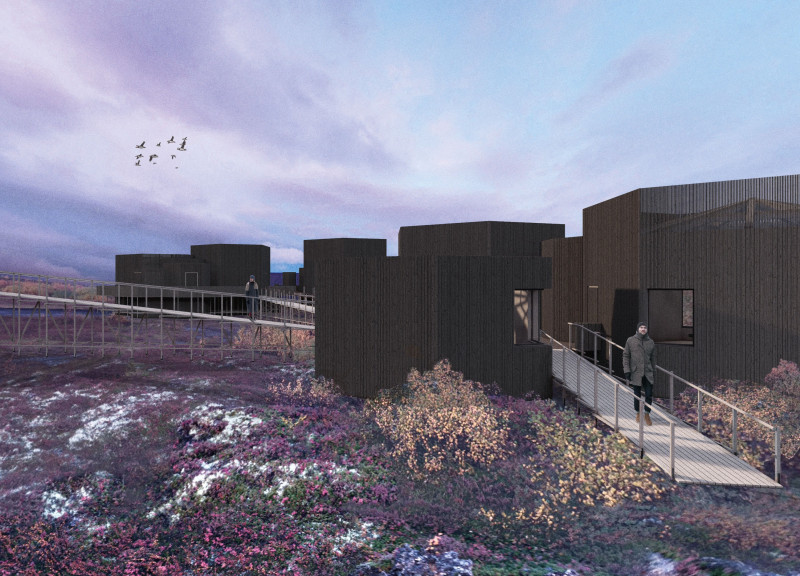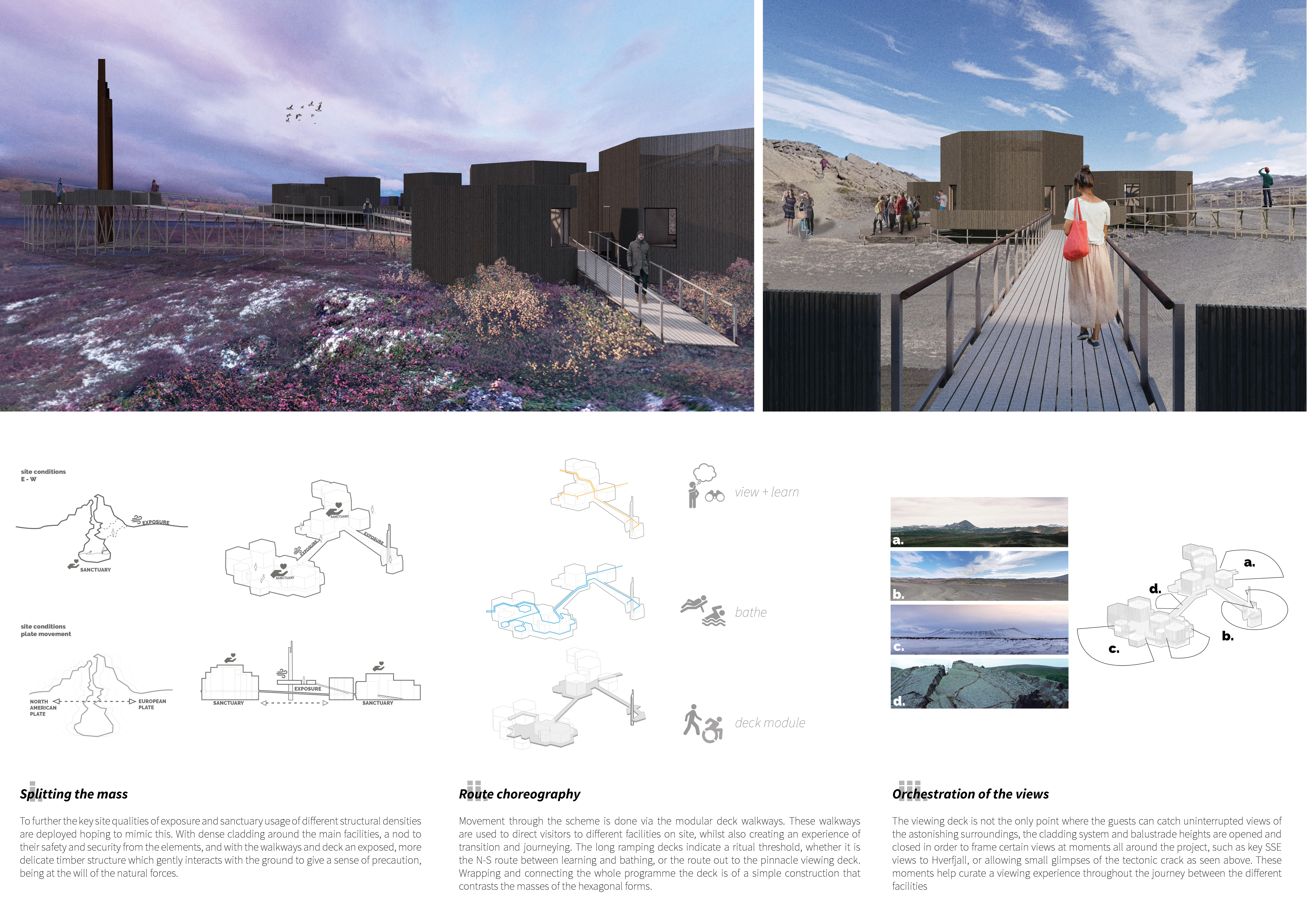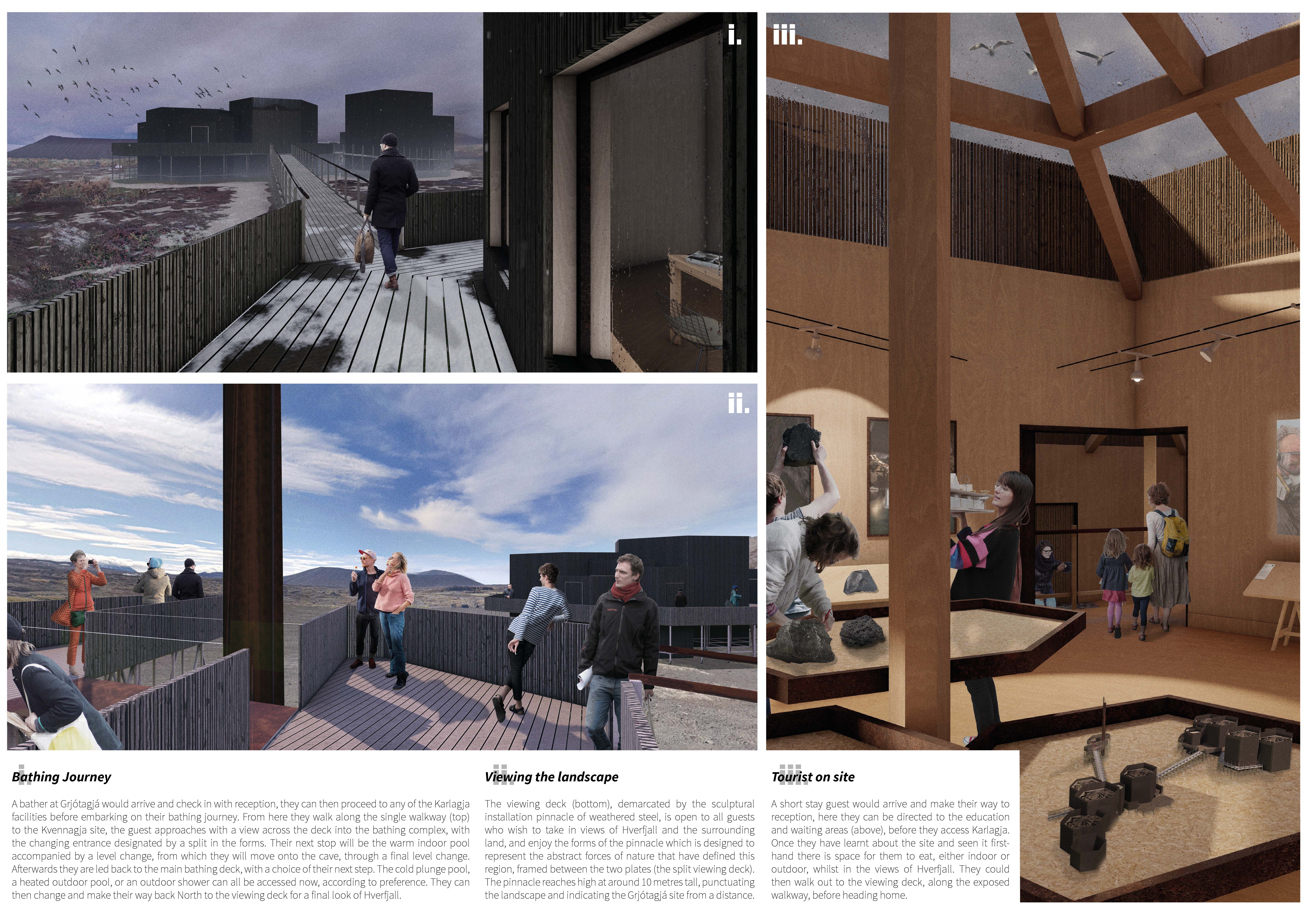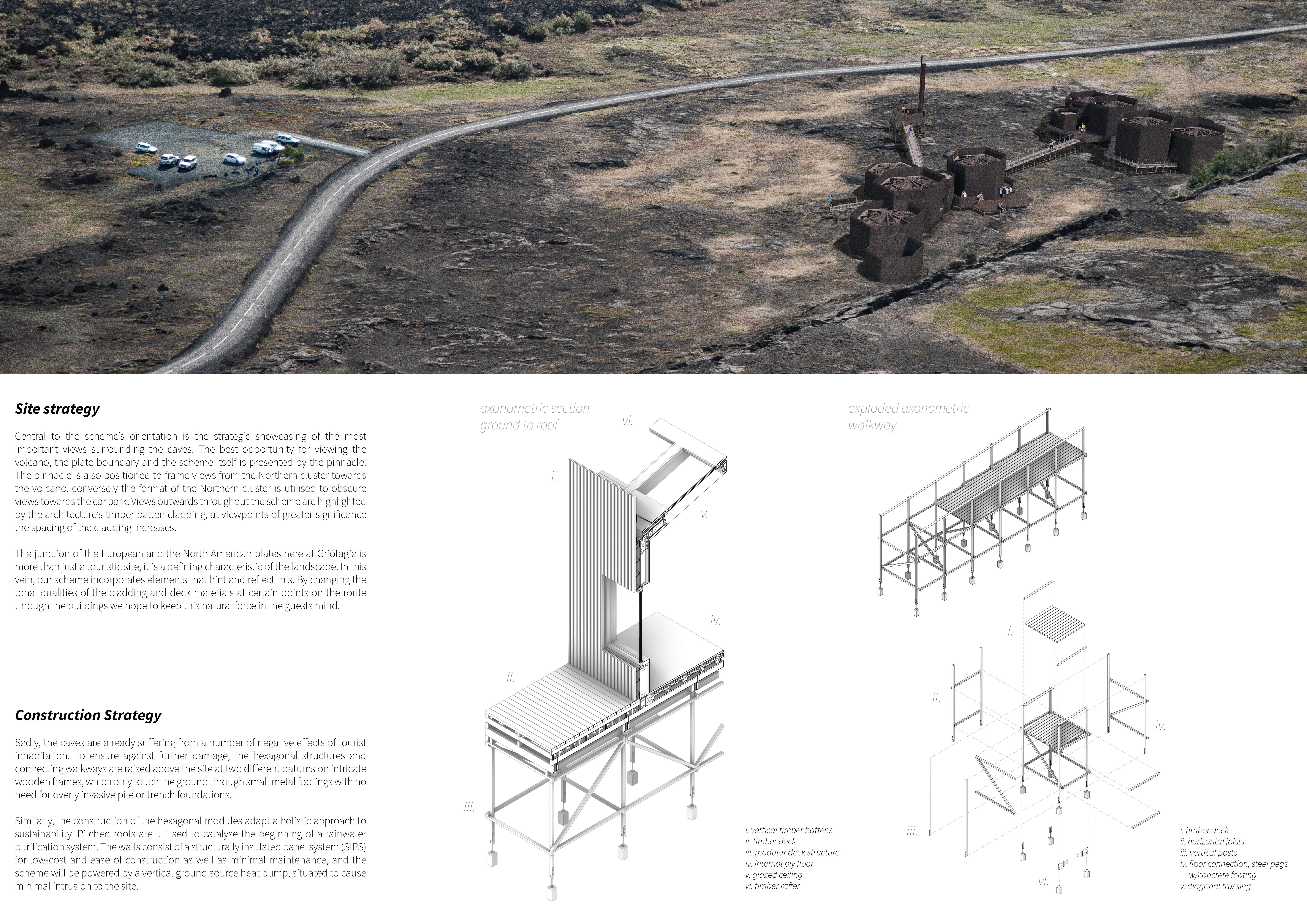5 key facts about this project
Functionally, the project serves multiple purposes, acting as a hub for educational experiences, recreational activities, and spaces for contemplation. With its carefully crafted layout, Útlegðarhellar is divided into various clusters, each tailored to facilitate different interactions. Visitors are guided through distinct areas that highlight the cultural and geological history of the region, showcasing how architecture can foster a deeper understanding of the surrounding landscape. The design encourages both passive and active engagement, making it accessible to a variety of users.
Key elements of the project include thoughtfully placed pathways that encourage exploration and facilitate movement between the different clusters. The paths lead to educational facilities where groups can learn about the geology of the area, as well as to relaxation spaces featuring natural bathing facilities that allow guests to unwind while taking in the breathtaking views. Additionally, strategically located viewing platforms enhance the visitor experience by providing treetop-like perspectives that ensure a connection with the surrounding landscapes.
Materiality plays a significant role in the overall design of Útlegðarhellar. The project primarily utilizes timber, steel, and glass, each selected for its performance and aesthetic quality. Timber is used extensively for structural components, establishing a warm and inviting atmosphere that complements the natural environment. Steel beams lend durability and support to elevated walkways and structures, essential for navigating the rugged terrain. Glass is incorporated in numerous features, enhancing transparency and connectivity with the views outside, allowing natural light to permeate the interior spaces. This careful selection of materials not only reinforces the architectural integrity but also aligns with sustainable design practices.
A unique design approach evident in Útlegðarhellar is the incorporation of modular structures that can adapt to the varying needs of guests while reflecting the fluidity of the landscape. The hexagonal shapes found throughout the project promote a sense of continuity and exploration, allowing spaces to flow into one another naturally. This design fosters a user-centered experience, where visitors are not merely spectators but active participants in their interaction with the environment.
The architectural strategies employed are both pragmatic and innovative. On one hand, the arrangement of spaces optimizes visitor circulation, ensuring ease of movement and accessibility without compromising the intimate connection with nature. On the other hand, the integration of educational aspects underscores a commitment to enhancing knowledge and appreciation for the Icelandic landscape, bridging the gap between architecture and environmental consciousness.
For those interested in delving deeper into the design and mechanical aspects of Útlegðarhellar, reviewing architectural plans, architectural sections, and architectural designs will provide valuable insights. This project serves as a testament to the potential of architecture in creating spaces that celebrate both built environments and their natural counterparts. An exploration of the project presentation will further illuminate the design ideas and approaches that define Útlegðarhellar, making it a noteworthy topic within contemporary architectural discourse.


























